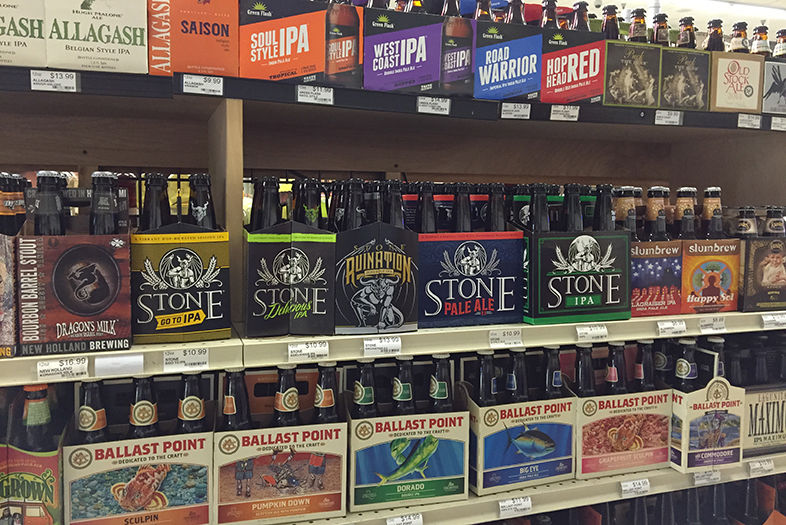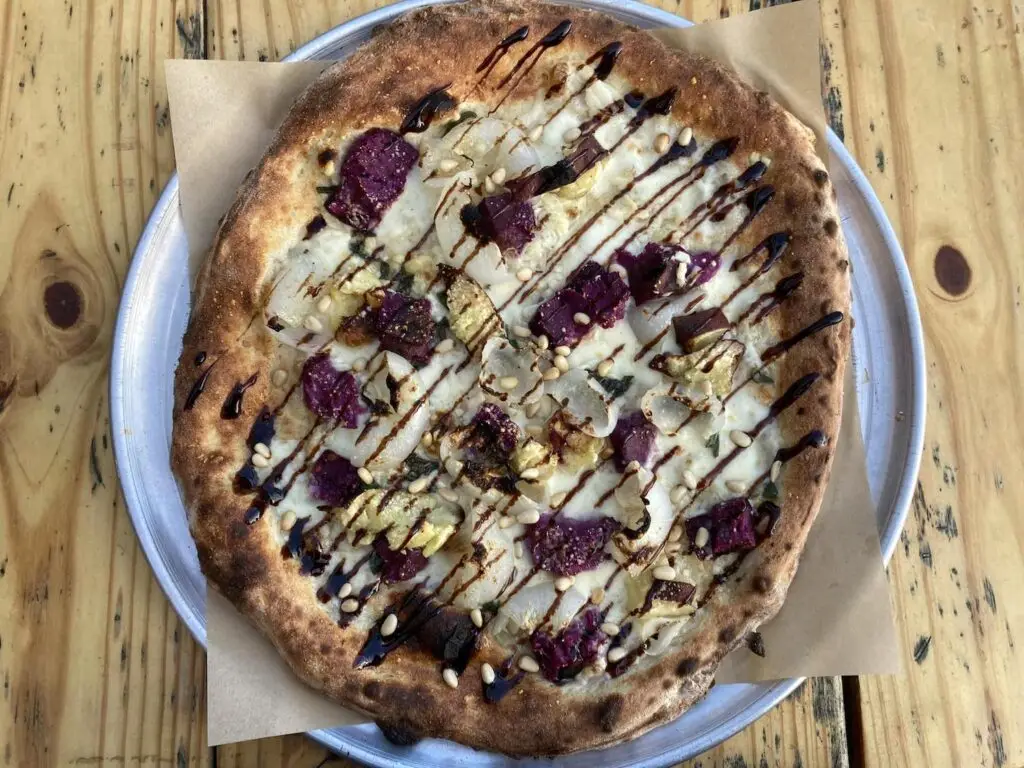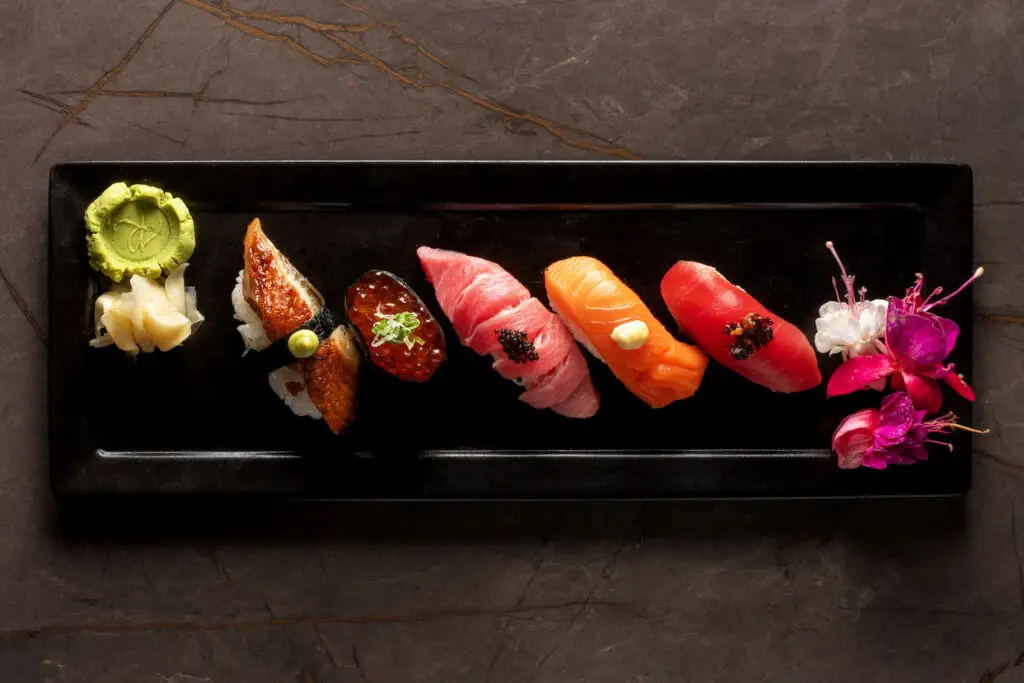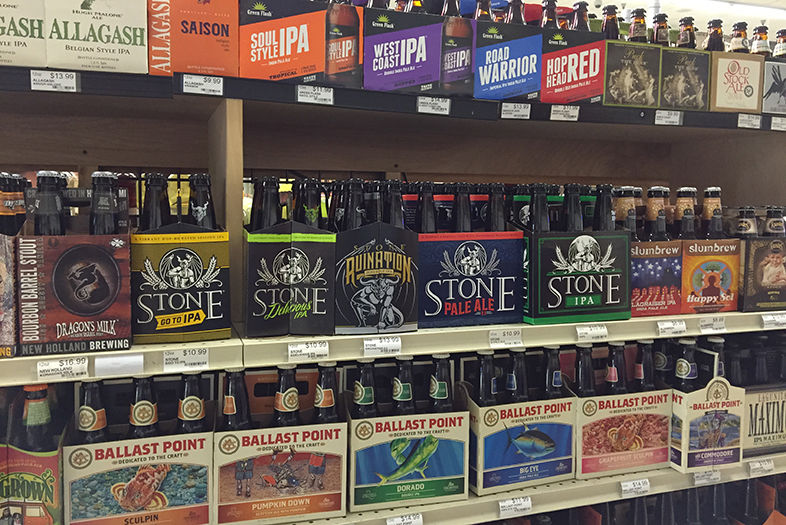I live in a craft beer bubble. I know all the breweries in town, I look for San Diego beers on every menu, I tend to order San Diego beer exclusively, and I judge the quality of tap lists at bars and restaurants (whether in San Diego or not) by how many—if any—San Diego beers they include. And—I admit it—when I meet a fellow San Diegan who hasn’t visited a bunch of local breweries or (God forbid!) hasn’t tried San Diego beer, I’m flabbergasted.
When I step back and gain some perspective, of course, I realize that not everyone has heard the word. There is still lots of work to be done locally to educate folks about the wonders of craft beer—and especially San Diego craft beer.
I recently got back from a week out on the East Coast, which got me curious about what the “San Diego presence” is 3,000 miles away from here. Granted, this was a personal, highly unscientific, and subjective exercise, but it was, nonetheless, interesting. I decided to pop in to a sampling of liquor stores (sometimes called “package stores” in New England) to see if, and how, San Diego beers were being represented. What I found was very encouraging; in small-town stores in Massachusetts, Connecticut, and New Jersey, San Diego beers were occupying significant shelf space. In many cases, it seemed that San Diego offerings made up a larger bloc than most other geographical areas. In one store in Waltham, Massachusetts, the bottle offerings included an impressive variety of Stone, AleSmith, Port Brewing, Ballast Point, Green Flash, and an amazing collection of Lost Abbey beers (more than 10 different bottles). In another location, outside of New Haven, Connecticut, a large liquor store with a hefty domestic beer selection featured four varieties of Green Flash (plus a few Cellar 3 bottles), five varieties of Stone, and six varieties of Ballast Point (plus random offerings from Lost Abbey and AleSmith). In most retail settings, this kind of shelf space is only given over to product that produces significant revenue. So, in crowded environments such as these—where San Diego is competing with dozens of local brands from the East Coast—having this much San Diego beer on offer is a testament to its nationwide popularity.
While I was out East, the news about Ballast Point’s impending IPO for $173 million went national. I couldn’t help but think this was yet another sign that the rest of the world is really starting to accept San Diego as a worldwide “brand” for beer (think Munich and German beer or Napa and California wine…). Only a month ago, international beer giant MillerCoors announced its acquisition of St. Archer (rumored to be in the $75 million range). This continued the trend by huge beer conglomerates to add cachet to their brands by beefing up the craft brewery part of their portfolios (St. Archer was the first San Diego brewery to provide that cachet). Of course, the 20 medals from GABF this year also underscored San Diego’s continued prominence in defining what’s great in great craft beer.
I can’t help but wonder, with all these accolades and all this positive exposure, how much is San Diego actually changing how brewers outside Southern California make their beer? Maybe it’s just my imagination, but the local beers I tasted on this trip seemed better-tuned to a San Diego palate than they had in the past. Historically, East Coast IPAs have been a major hop letdown for me—too malt-forward and lacking aromatics. But, on this trip, I found myself actually liking beers I hadn’t liked much before. Harpoon IPA? Not bad. Sam Adams Rebel IPA? Nice hop aromas. Sea Hag IPA from a small New Haven brewery called Elm City? Nice and hoppy, with great citrus and pine aromas! Can it be that more and more breweries are moving their IPAs closer to the San Diego style? Honestly, I have absolutely no idea, but—based on my very limited and highly unscientific research— I am happy telling myself that they are.

All Hopped Up
PARTNER CONTENT
San Diego beer in a Connecticut liquor store | Photo by Bruce Glassman















